Abstract
Hospital admissions for pelvic inflammatory disease increased by 8.7% a year among women aged 15-44 in England and Wales between 1966 and 1976. Acute disease was three times as frequent as chronic disease, although admissions for the chronic condition are increasing more rapidly than for the acute. Peak incidence of acute disease is at ages 20-24 and of chronic disease at ages 25-29. Divorced women had the highest rates of both forms. Single women had higher rates of acute disease than married women but the latter had higher admission rates for chronic disease. In general, the pattern of acute disease follows that of sexually transmitted disease. The pattern of chronic disease in turn reflects the long-term effects of acute disease. The increase in chronic disease is of concern because hospital discharge rates are increasing more rapidly than for acute disease, and in 1976 one in every eight cases mentioned infertility in association with the disease.
Full text
PDF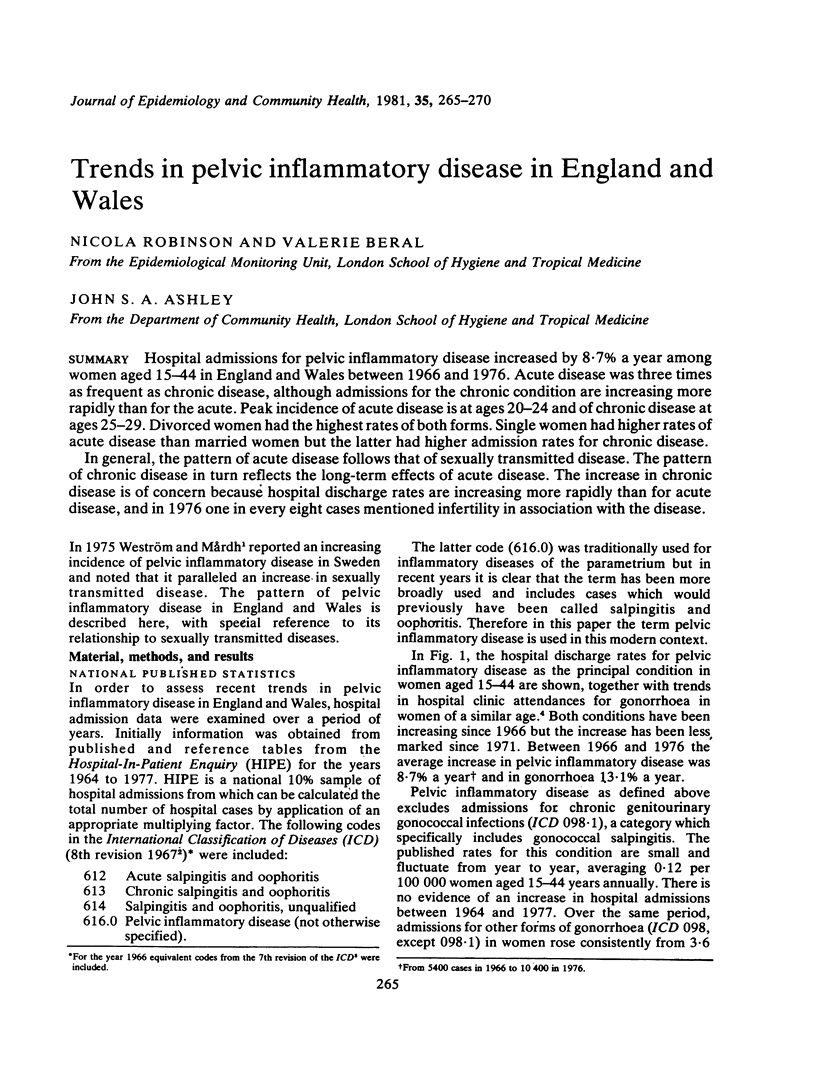
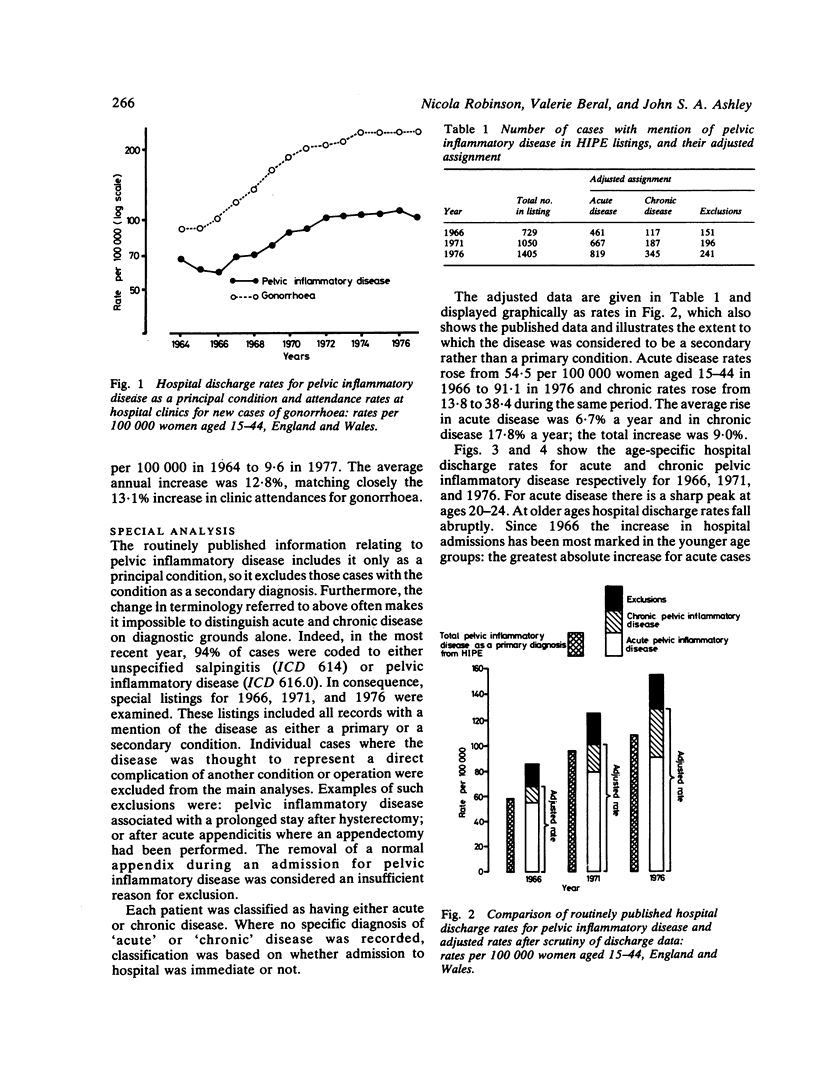
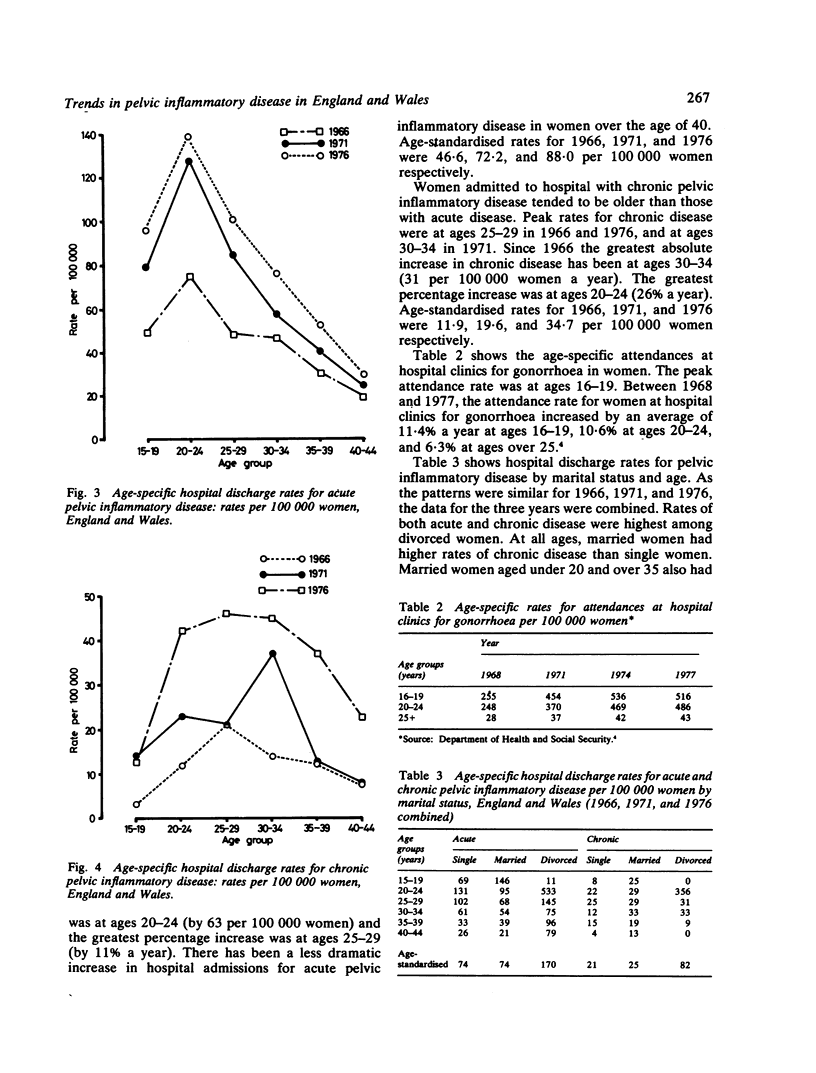
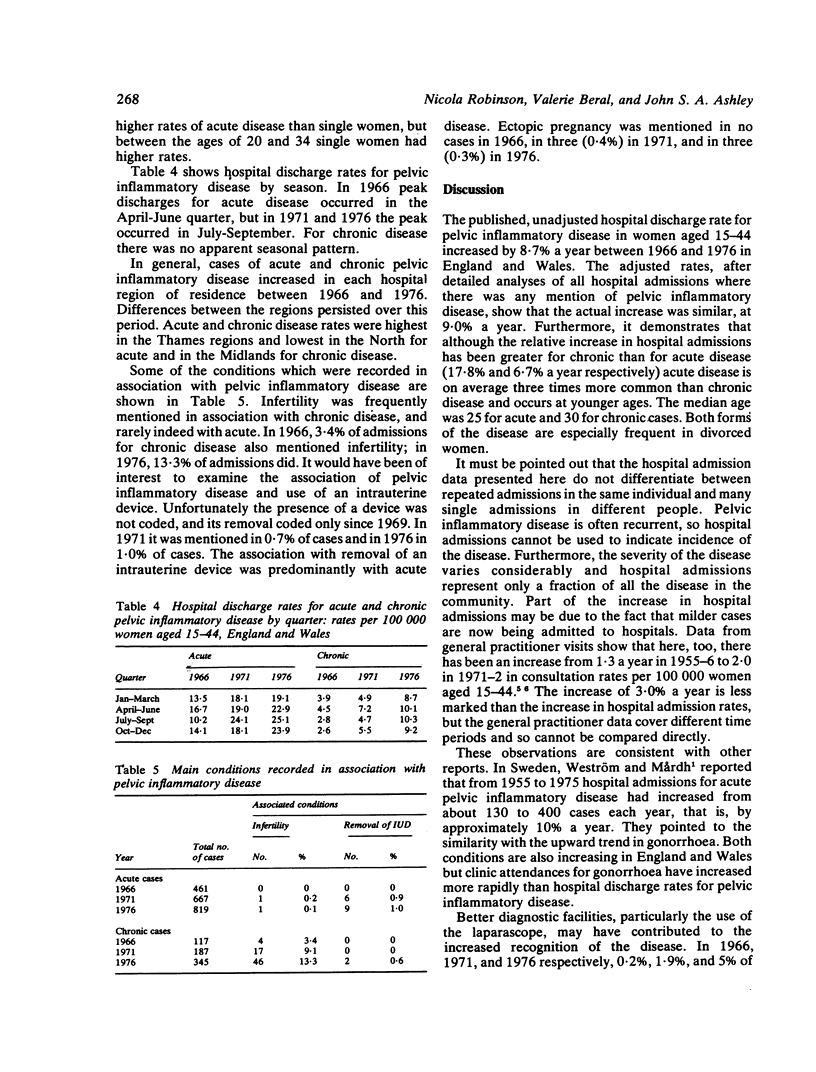
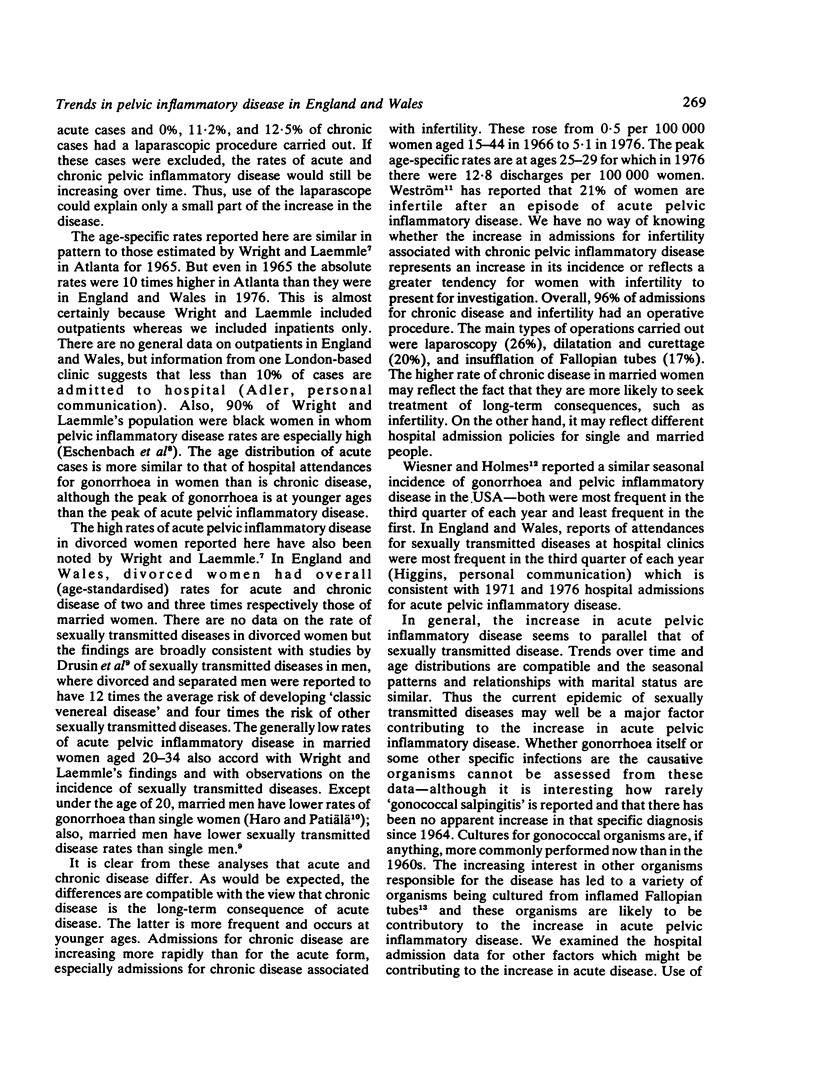
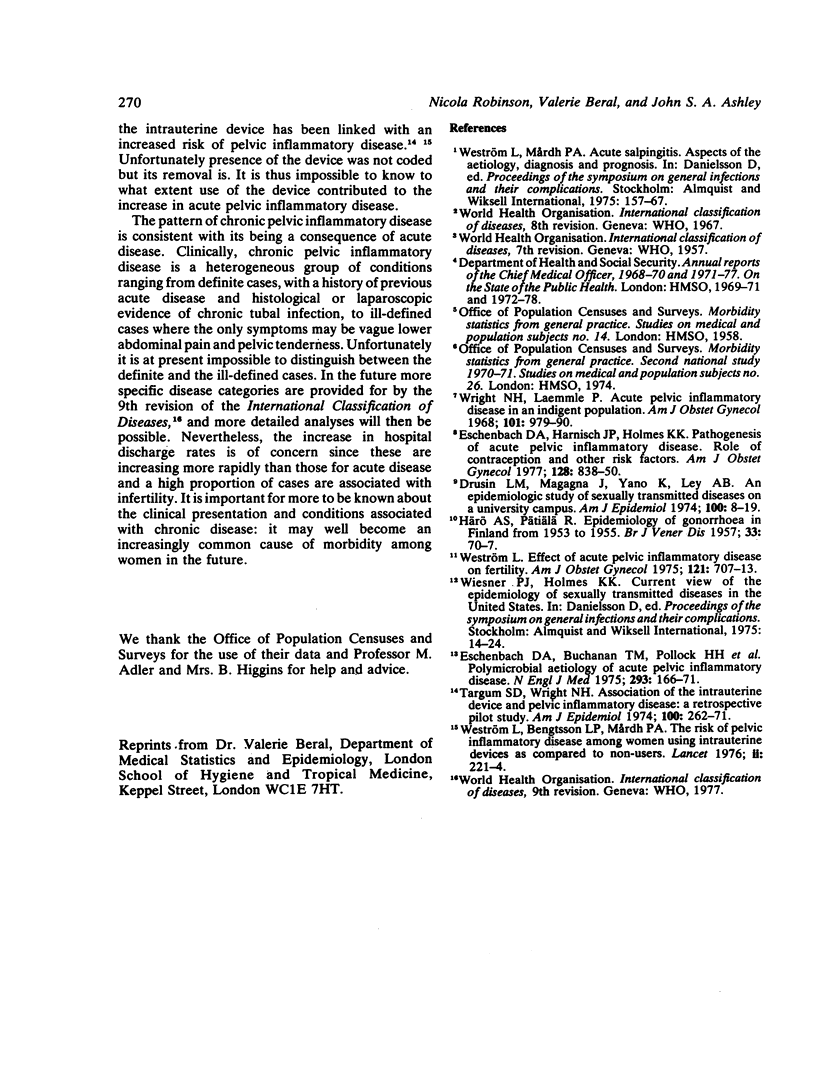
Selected References
These references are in PubMed. This may not be the complete list of references from this article.
- Drusin L. M., Magagna J., Yano K., Ley A. B. An epidemiologic study of sexually transmitted diseases on a university campus. Am J Epidemiol. 1974 Jul;100(1):8–19. doi: 10.1093/oxfordjournals.aje.a112011. [DOI] [PubMed] [Google Scholar]
- Eschenbach D. A., Buchanan T. M., Pollock H. M., Forsyth P. S., Alexander E. R., Lin J. S., Wang S. P., Wentworth B. B., MacCormack W. M., Holmes K. K. Polymicrobial etiology of acute pelvic inflammatory disease. N Engl J Med. 1975 Jul 24;293(4):166–171. doi: 10.1056/NEJM197507242930403. [DOI] [PubMed] [Google Scholar]
- Eschenbach D. A., Harnisch J. P., Holmes K. K. Pathogenesis of acute pelvic inflammatory disease: role of contraception and other risk factors. Am J Obstet Gynecol. 1977 Aug 15;128(8):838–850. doi: 10.1016/0002-9378(77)90051-5. [DOI] [PubMed] [Google Scholar]
- Targum S. D., Wright N. H. Association of the intrauterine device and pelvic inflammatory disease: a retrospective pilot study. Am J Epidemiol. 1974 Oct;100(4):262–271. doi: 10.1093/oxfordjournals.aje.a112034. [DOI] [PubMed] [Google Scholar]
- Weström L., Bengtsson L. P., Mårdh P. A. The risk of pelvic inflammatory disease in women using intrauterine contraceptive devices as compared to non-users. Lancet. 1976 Jul 31;2(7979):221–224. doi: 10.1016/s0140-6736(76)91025-4. [DOI] [PubMed] [Google Scholar]
- Weström L. Effect of acute pelvic inflammatory disease on fertility. Am J Obstet Gynecol. 1975 Mar 1;121(5):707–713. doi: 10.1016/0002-9378(75)90477-9. [DOI] [PubMed] [Google Scholar]
- Wright N. H. Acute pelvic inflammatory disease in an indigent population. An estimate of its incidence and relationship to methods of contraception. Am J Obstet Gynecol. 1968 Aug 1;101(7):979–990. doi: 10.1016/0002-9378(68)90285-8. [DOI] [PubMed] [Google Scholar]


